Treating yourself to a new mattress is an exciting investment in your sleep comfort and overall well-being. You’ll be thrilled with your purchase and excited to get to bed almost as soon as it arrives. However, many people wonder whether it is safe to sleep on their new mattress while it is still in the process of expanding. In this article, we will explore the process of mattress expansion, the science behind it, some factors that influence expansion and more!
We will also address the question of whether it is possible to sleep on a mattress during expansion, as well as ways to speed up the process if necessary. Let’s unroll the mystery surrounding mattress expansion to ensure a restful and comfortable sleep experience on your new addition.
What is the mattress expansion process?
In this era of modern mattresses, typically bought online, they are usually compressed and tightly rolled or folded for efficient shipping and handling. The mattress is vacuum-sealed and packaged to minimise its size. Once the mattress is slid out of its box and placed onto your bed, it will begin to decompress – then expand to its full size and shape over a period of time.
This initial expansion typically doesn’t take too long, and is quite fun to watch! You’ll then need to leave it a while to fully expand and reach its true potential, which we’ll discuss later on in this article. You don’t necessarily want to sleep on new mattress purchases before they’re ready.

What is the science behind mattress expansion?
The science behind mattress expansion primarily revolves around the elastic properties and cellular structure of the materials used in the mattress. Most mattresses these days are made of some type of foam, which is highly flexible and responsive to pressure. The foam cells contain gas, and when the mattress is vacuum-sealed packaging, the gas disappears. When this tight packaging is removed, pressure release allows the foam cells to expand and take in air, resulting in the mattress gradually regaining its original size and shape. It’s pretty clever if you ask us!
You need to give the mattress time to regain its intended shape without lying on it straight away, as you don’t want to stop any air getting in – this could lead to it never getting to the shape it needs to be. And if that happens, the mattress won’t be quite as delightfully comfortable as you’d hope! People often wonder if there is any impact on the performance and longevity of a mattress if it has been vacuum-sealed. But in reality, the vacuum-packing process doesn’t have any impact on the quality of a mattress and how well it performs for you.
What are common mattress types and expansion times
Different mattress types have varying expansion times. There are four common types, and we’ll explore the average mattress expansion time for each of these.
Innerspring mattresses
An innerspring mattress is one of the most traditional types, and typically more common than other mattresses. They have their benefits, but they’re generally not quite as comfortable and supportive as foam-based mattresses. Also known as coil mattresses, the spring shapes, coil gauge and how many coils there are can vary! With spring mattresses, the expansion can take around 24-48 hours; it might look like it’s expanded much earlier than that, but there is still movement happening inside.
Memory foam mattresses
One of the best mattress types is a memory foam mattress. They contour to your body to offer personalised support, and they’re delightfully comfortable. These mattresses are probably the second most popular type, and they’re becoming much more accessible than they once were! You’ll find they too need around 48 hours to completely expand, with room temperature affecting the duration. That’s not to say you can’t dive in and snuggle up after just a few hours, but you definitely won’t be experiencing the product’s true potential at that point.
Latex mattresses
A latex mattress is another option that is growing in popularity thanks to its cooling and supportive properties. They also tend to be one of the quickest to expand, with some fully expanding after just 8-12 hours! Latex is a natural material, and people often find it easy to adjust to sleeping on a latex mattress, even if you’ve never tried one before.
Hybrid mattresses
Hybrid mattresses are the best in the business – this refers to any mattress that is a blend of two types, most commonly innerspring and memory foam. Our incredible Hybrid Bamboo Mattress is made from orthopaedic-grade memory foam combined with seven zones of individually enclosed springs, meaning you get the best of both worlds for the most supportive sleep yet. Hybrid mattresses are also typically vacuum sealed, making for easier delivery! Because they contain multiple materials, they might take slightly longer (up to 72 hours) to fully expand… but they’re worth the wait.

Factors influencing mattress expansion
When it comes to mattress expansion, there are certain circumstances and factors that have an influence over how long it might take. One of these is room temperature and ventilation; research suggests that a warm and slightly humid environment can actually help your mattress expand slightly quicker, so it’s worth bearing that in mind! However, you don’t want the room to be *too* hot or humid, as this can negatively impact the materials and cause odour.
The thickness and density of the mattress itself can have an effect on the expansion time, too; it makes sense that the thicker and more dense your mattress, the longer it will take to reach its fully expanded state. Nice, thick mattresses are definitely worth the extra couple of hours, though, as they’re more supportive and a lot more comfortable. Be sure to look at the manufacturer’s recommendations for how long to wait until sleeping on your new mattress, too!
Can you sleep on a mattress during expansion?
It’s your mattress, so it’s up to you whether you want to sleep on it while it’s still reaching its fully expanded state. However, there are definitely some things to consider! If you sleep on it before it’s completely ready, you might get a bad first impression of the mattress because it won’t feel quite as comfortable as it will when it’s at its best – but if your old mattress has been taken away when your new one was delivered, then it’s definitely better to sleep on a ‘not quite expanded’ new mattress than to choose the floor or sofa…
If you leave the mattress for a few hours before diving in, it should be mostly expanded at this point. This means there shouldn’t be any negative impact on the mattress’s performance in the long run. If you climb on as soon as it’s unrolled and before any expansion, you do run the risk of squashing internal parts of the product. This might mean they don’t work properly! There is also safety to consider; if you lie on a mattress while it’s still doing the bulk of the expansion, you risk issues with the gas coming out or springs moving around. Mattress settling time varies, but it is always best to give your mattress at the very least 8 hours before getting cosy!
We asked our medical expert, Dr Seeta Shah, about whether sleeping on a mattress during expansion would be recommended. She said, “Generally, no serious health risks are associated with sleeping on a new mattress immediately, but it depends on the type. Many modern mattresses, especially those delivered compressed in a box (memory foam or hybrid models), need time to expand – typically 24-72 hours – to reach their full size and firmness. Sleeping on it too soon might not be harmful, but it can impact your comfort and the mattress’s long-term performance.”
Tips for optimal mattress expansion
There are a few tips we would give you when it comes to expanding mattress guidelines. First and foremost, follow the manufacturer guidelines – all mattresses are slightly different, so you need to know exactly what to do with yours. If there are no visible instructions, don’t hesitate to reach out to the company’s customer service team. It’s what they’re there for!
Prepare your room ahead of time. Remove your old mattress – here at Panda, we’ll take it away for you to dispose of it responsibly too. Clear enough space, and make sure your bedside tables are clear. Take the time to prepare the base of your bed too: give it a quick vacuum and a wipe over if need be, so you’re really starting fresh. Then, it’s time to be patient and get on with your day while waiting for the mattress to expand. Make sure you’ve got fresh bedding, clean pyjamas, and a calm mindset before getting into bed with your new mattress for the first time. You’ll have your best sleep ever…

How can you speed up the expansion process?
Patience is key, but if you really want to speed up the mattress expansion process, then here are a few things you can do. First of all, you should unpack it straight away when it arrives. Don’t leave it in the box any longer, as the sooner you get it out the faster it should start to expand. Another thing you can do is turn on your central heating or pop a space heater in the room – the warmth should give your new product a helping hand. If your mattress really doesn’t seem to be expanding, you can gently try to manoeuvre it by pulling the layers. However, this isn’t typically recommended, and you need to be *very* careful. Be sure to contact the customer service team of your mattress brand if you are worried, and see how they can advise you.
How to break in your new mattress
Now your mattress is fully expanded and you’re ready to roll into bed for some much-improved sleep, you might be wondering how long it takes to ‘break in’ your new purchase or how to do so. We’re here to help! The process of breaking in a new mattress refers to how long it takes you to get used to it – and this depends on the person as well as what you’ve bought. If you already had a memory foam mattress and you’ve replaced it with something similar, for example, it shouldn’t take too long. But if you’re moving from, say, an innerspring to a hybrid, then it might take some getting used to!
Dr Seeta says “it’s completely normal to feel some initial discomfort when switching to a new mattress – even if it’s high quality like a Panda mattress. Your body, especially your back and joints, may need time to adjust to the new level of support and alignment. This is especially true if your old mattress was sagging or lacked support, and your muscles and spine had adapted to it over time.
Most people adjust within a few days to a couple of weeks. Give your body time to adapt, and avoid making quick judgments after just one or two nights.”
Be patient, and get into bed with a positive mindset. Remember that in general, it can take around a month to get used to your new mattress; don’t expect to fall in love with your new sleep set-up overnight, although you might. New mattress care is important, and if you want to speed up the process, then you can do the following:
- Roll back and forth across your mattress to distribute weight evenly
- Spend at least 8 hours a night on your mattress
- Placing some heavy objects on the mattress for an hour or so a day
- Letting it breathe when you’re not sleeping by removing sheets, toppers and duvets
When shopping for a new mattress, be sure to choose a company that offers a free trial period for optimal mattress use. Therefore, you can spend time breaking in the mattress before deciding if it’s actually the right choice for you!
Dr Seeta has some more tips for breaking in a new mattress, too:
-
Give it time: As mentioned, it can take a few weeks for your body to adjust, so be patient.
-
Break it in: Spend extra time lying or sitting on the mattress during the day to help it soften and conform to your shape.
-
Use a mattress topper: If it feels too firm, a high-quality mattress topper can help bridge the gap while still allowing the mattress to support your spine properly.
-
Adjust your pillows: New mattresses may change your alignment, so consider using a different pillow to maintain proper neck and back support.
-
Keep the room ventilated: If there’s any new-foam smell, airing out the room will help make the environment more pleasant.
-
Stick to your routine: Keeping a consistent bedtime routine will help your body adapt more quickly to the change.
Sleeping on a new mattress
There you have it – everything you need to know about the mattress expansion process and making the most of your new purchase. Remember, these mattresses are packaged this way for convenience to make delivery easier, so you can enjoy it much faster. It’s worth letting your new product properly expand before sleeping on it so you can enjoy restful nights for years to come; always follow the manufacturer’s instructions!
| Make Your Mattress Perfect—Discover the Best Topper for Side Sleepers. |
FAQs
1. How long does a mattress take to expand?
Most new mattresses take between 24 to 72 hours to fully expand. However, this can vary based on the mattress type and manufacturer.
2. Is it safe to sleep on my new mattress during the expansion process?
While sleeping on a new mattress while expanding is generally safe, waiting until it fully expands can ensure maximum comfort and support.
3. Can the expansion process of the mattress release any odours?
Yes, new mattresses can emit a mild odour during the expansion process, known as off-gassing. This is typically harmless and should dissipate within a few days.
4. Are there any mattress types that shouldn’t be slept on immediately?
Memory foam and some hybrid mattresses might need the full expansion time for optimal performance. Check with the manufacturer for specific guidance.
5. What can I do to help my new mattress expand more quickly?
Please make sure the mattress is in a well-ventilated room at a comfortable temperature. You can also gently walk on the surface to help it expand.
Fact-checked by: Dr Seeta Shah

![[MattressTopper] Panda London Memory Foam Bamboo Mattress Topper package box](http://pandalondon.com/cdn/shop/files/Bamboo_Mattress_Topper_Package_Box.webp?v=1742301823&width=1500)
![[MattressTopper] Panda London Memory Foam Bamboo Mattress Topper on the floor](http://pandalondon.com/cdn/shop/products/Panda-Memory-Foam-Bamboo-Mattress-Topper-Yoga-e1624045454555.jpg?v=1758795458&width=1000)
![[MattressTopper] Bamboo Mattress Topper Lifestyle Image with Memory Foam Pillows Product Page](http://pandalondon.com/cdn/shop/files/Bamboo_Mattress_Topper_Lifestyle_Image_with_Memory_Foam_Pillows_Product_Page.webp?v=1758795458&width=800)
![[MattressTopper] Bamboo Mattress Topper Lifestyle Image with Bamboo Pillows In the Garden room Product Page](http://pandalondon.com/cdn/shop/files/Bamboo_Mattress_Topper_Lifestyle_Image_with_Bamboo_Pillows_In_the_Garden_room_Product_Page.webp?v=1758795458&width=800)
![[MattressTopper] Panda London Memory Foam Bamboo Mattress Topper side](http://pandalondon.com/cdn/shop/files/Mattress_Topper_Isolated_-_resized.jpg?v=1758795458&width=800)
![[HybridMattressPro] Main Image for Hybrid Bamboo Mattress Pro with all awards](http://pandalondon.com/cdn/shop/files/Hybrid_Bamboo_Mattress_Pro_Main_product_Image_with_awards.webp?v=1753971649&width=1000)
![[HybridMattressPro] Breathable Hybrid Bamboo Mattress](http://pandalondon.com/cdn/shop/products/Breathable-Hybrid-Bamboo-Mattress.jpg?v=1753971649&width=1920)
![[HybridMattressPro] Hybrid Bamboo Mattress Pro Cover Zip](http://pandalondon.com/cdn/shop/files/Hybrid_Bamboo_Mattress_Cover.jpg?v=1753971649&width=800)
![[HybridMattressPro] Panda Hybrid Bamboo Mattress Pro](http://pandalondon.com/cdn/shop/files/Hybrid_Bambo_Memory_Foam_Mattress_-_BioCell_Foam_x.jpg?v=1755095108&width=800)
![[HybridMattressPro] Couple on a Hybrid Bamboo Mattress Pro](http://pandalondon.com/cdn/shop/files/Hybrid_Bamboo_Mattress_Couple.jpg?v=1753971649&width=800)
![[CloudDuvet] Panda London The Cloud Bamboo Duvet Packaging](http://pandalondon.com/cdn/shop/products/Panda-London-The-Cloud-Bamboo-Duvet-Panda-Life-scaled_00a651ad-4ca3-4105-b520-12a94c1a4f71.jpg?v=1713363286&width=1920)
![[CloudDuvet] Panda London The Cloud Bamboo Duvet Rolled](http://pandalondon.com/cdn/shop/products/Duvet-Listing-Images03.jpg?v=1764079307&width=1000)
![[CloudDuvet] Panda London The Cloud Bamboo Duvet Girl Huggin a Duvet on the Bed](http://pandalondon.com/cdn/shop/files/Cloud_Bamboo_Duvet_-_Lady_Hugging_it_on_Bed_LifestyleImage.jpg?v=1764079307&width=1000)
![[CloudDuvet] Panda London The Cloud Bamboo Duvet Guy In the Air with Cloud Bamboo Duvet](http://pandalondon.com/cdn/shop/files/GuyonaHybridBambooMattresswithCloudDuvet.jpg?v=1764079307&width=2000)
![[CloudDuvet] Panda Cloud Duvet Winter on the bed lifestyle image](http://pandalondon.com/cdn/shop/files/Panda_Cloud_Duvet_Winter_on_the_Bed_Lifestyle-1_image.jpg?v=1764079307&width=1000)
![[BBWhite] White 100% Bamboo Bedding](http://pandalondon.com/cdn/shop/files/Pure_White_Full_Bed.webp?v=1719581797&width=1000)
![[BBWhite] White 100% Bamboo Bedding Texture](http://pandalondon.com/cdn/shop/files/100_Bamboo_Bedding_-_Pure_White_-_Close_Up_02.webp?v=1762879591&width=1000)
![[BBWhite] White 100% Bamboo Bedding Woman in bed sleeping](http://pandalondon.com/cdn/shop/files/100-Bamboo-Bedding-Set-Pure-White-BB.webp?v=1762879591&width=768)
![[BBWhite] White 100% Bamboo Bedding Woman Duvet cover buttons](http://pandalondon.com/cdn/shop/files/hand_and_buttons_1.webp?v=1762879591&width=1000)
![[BBWhite] White 100% Bamboo Bedding Woman in bed looking and smiling-](http://pandalondon.com/cdn/shop/files/SatonMadeBed-White100_BambooBedding-white_-_BB_SideShot1000x1000.webp?v=1762879591&width=980)
![[BBUrbanGrey] Urban Grey 100% Bamboo Bedding](http://pandalondon.com/cdn/shop/files/Made_Bed_-_Urban_Grey_-_Wide_Shot_2_1_1.webp?v=1762880019&width=1000)
![[BBUrbanGrey] Cloud Duvet Urban Grey 100% Bamboo Bedding Set](http://pandalondon.com/cdn/shop/files/Cloud_Duvet_-_Grey_-_Close_up_2.webp?v=1762880019&width=1000)
![[BBUrbanGrey] Urban Grey 100% Bamboo Bedding Set Woman sitting on the bed](http://pandalondon.com/cdn/shop/files/Sat_in_Bed_-_Grey_100__Bamboo_Bedding_-_Wide_Shot.webp?v=1762880019&width=1000)
![[BBUrbanGrey] Urban Grey 100% Bamboo Bedding Set Woman Duvet buttons Panda London](http://pandalondon.com/cdn/shop/files/hand_buttons_grey_bedding_1.webp?v=1762880019&width=1000)
![[BBUrbanGrey] Woman Sitting on the Bamboo Bedding with coffee](http://pandalondon.com/cdn/shop/files/SatonMadeBed-White100_BambooBedding-SideShot1000x1000.jpg?v=1762880019&width=1000)
![[BBNavyBlue] Deep Sea Navy Blue 100% Bamboo Bedding](http://pandalondon.com/cdn/shop/files/Made_Bed_-_Navy_-_Wide_Shot_3_copy.webp?v=1762879591&width=1000)
![[BBNavyBlue] Deep Sea Navy Blue 100% Bamboo Bedding Texture](http://pandalondon.com/cdn/shop/files/Cloud_Duvet_-_Navy_-_Close_up_2.webp?v=1762880019&width=1000)
![[BBNavyBlue] Deep Sea Navy Blue 100% Bamboo Bedding Woman Sitting on the bed](http://pandalondon.com/cdn/shop/files/Sat_Up_in_Bed_-_Navy_100__Bamboo_Bedding_-_Hands_on_Bed.webp?v=1762880019&width=1000)
![[BBNavyBlue] Deep Sea Navy Blue 100% Bamboo Bedding Duvet Cover Buttons](http://pandalondon.com/cdn/shop/files/Cloud_Duvet_Cover_Buttons_-_Deep_Sea_Navy.webp?v=1762880019&width=1000)
![[BBNavyBlue] Deep Sea Navy Blue 100% Bamboo Bedding Woman sitting on the bed looking away](http://pandalondon.com/cdn/shop/files/SatonMadeBed-White100_BambooBedding-SideShot1000x1000-001.webp?v=1762880019&width=980)
![[BBPink] Vintage Pink Blue 100% Bamboo Bedding](http://pandalondon.com/cdn/shop/files/Made_Bed_-_Pink_-_Wide_Shot_copy.webp?v=1762879591&width=1000)
![[BBPink] Vintage Pink Texture 100% Bamboo Bedding](http://pandalondon.com/cdn/shop/files/Cloud_Duvet_-_Pink_-_Close_up_2.webp?v=1762880019&width=1000)
![[BBPink] Vintage Pink Woman Sitting on the 100% Bamboo Bedding](http://pandalondon.com/cdn/shop/files/Sat_Up_in_Bed_-_Pink_-_Hands_on_Bed.webp?v=1762880019&width=1000)
![[BBPink] Vintage Pink Woman Sitting on the 100% Bamboo Bedding Duvet Cover](http://pandalondon.com/cdn/shop/files/Cloud_Duvet_Cover_Buttons_-_Vintage_Pink.webp?v=1762880019&width=1000)
![[BBPink] Vintage Pink Woman Sitting on the 100% Bamboo Bedding Woman looking far away](http://pandalondon.com/cdn/shop/files/SatonMadeBed-White100_BambooBedding-SideShot1000x1000-001_Vintage_Pink.webp?v=1762880019&width=980)
![[BBGrey] Light Grey 100% Bamboo Bedding](http://pandalondon.com/cdn/shop/files/Made_Bedding_in_Bedroom_-_Urban_Grey_-_Wide_Shot.webp?v=1762879591&width=1000)
![[BBGrey] Light Grey 100% Bamboo Bedding texture](http://pandalondon.com/cdn/shop/files/Texture17.webp?v=1762880019&width=1000)
![[BBGrey] Light Grey 100% Bamboo Bedding with Woman smiling](http://pandalondon.com/cdn/shop/files/Sat_Up_in_Bed_-_Grey_-_Hands_on_Bed.webp?v=1762880019&width=1000)
![[BBGrey] Light Grey 100% Bamboo Bedding with Duvet Cover buttons](http://pandalondon.com/cdn/shop/files/Cloud_Duvet_Cover_Buttons_-_Quiet_Grey.webp?v=1762880019&width=1000)
![[BBGrey] Light Grey 100% Bamboo Bedding with Woman smiling and sitting coffee](http://pandalondon.com/cdn/shop/files/SatonMadeBed-White100_BambooBedding-SideShot1000x1000-002-_Grey.webp?v=1762880019&width=980)
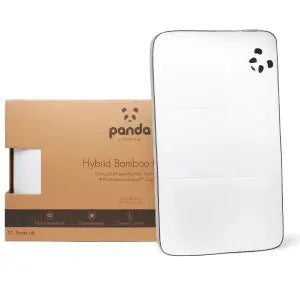 Hybrid Bamboo Pillow
Hybrid Bamboo Pillow Memory Foam Bamboo Pillow
Memory Foam Bamboo Pillow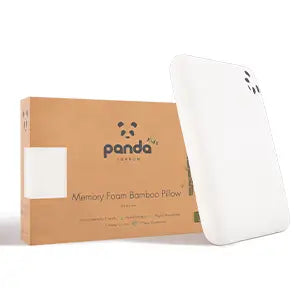 Kids Memory Foam Bamboo Pillow
Kids Memory Foam Bamboo Pillow Baby Memory Foam Bamboo Pillow
Baby Memory Foam Bamboo Pillow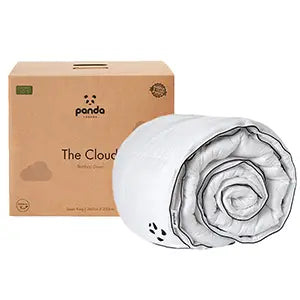 Panda Cloud Duvet
Panda Cloud Duvet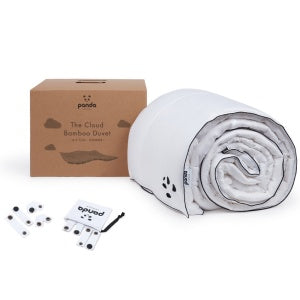 Bamboo Summer Duvet
Bamboo Summer Duvet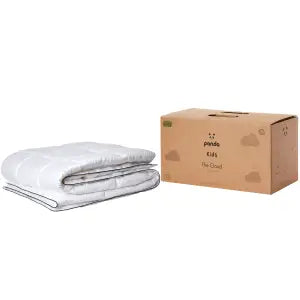 Kids Cloud Duvet
Kids Cloud Duvet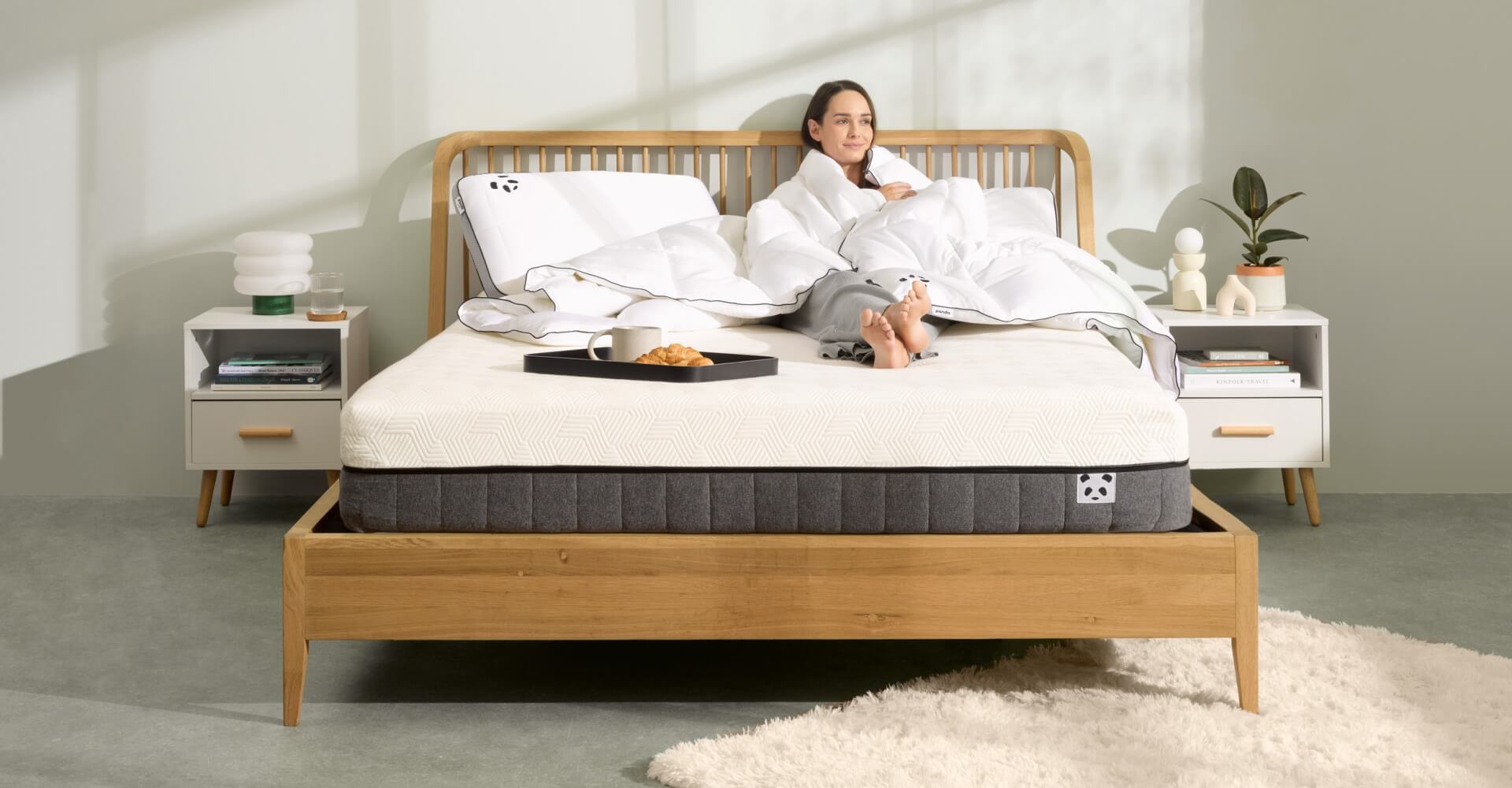

![[all] Bamboo Mattress Protector Package - PandaLondon](http://pandalondon.com/cdn/shop/files/Bamboo_Mattress_Protector_-_Packaging_Image_-_White_Background.webp?v=1721139172&width=1900)
![[all] Bamboo Mattress Protector for Hybrid Bamboo Mattress](http://pandalondon.com/cdn/shop/files/Bamboo_Mattress_Protector_New.webp?v=1721138562&width=1000)
![[all] Book on a Bamboo Mattress Protector](http://pandalondon.com/cdn/shop/products/Mattress-Protector-Listing-Images02.jpg?v=1721139189&width=1500)
![[all] Bamboo Mattress Protector Corner](http://pandalondon.com/cdn/shop/products/Mattress-Protector-Listing-Images03-e1623787734812.jpg?v=1721139189&width=1300)
![[all] Bamboo Mattress Protector Corner in line Panda London](http://pandalondon.com/cdn/shop/products/Mattress-Protector-Listing-Images04.jpg?v=1721139183&width=1500)
![[all] Panda Bamboo Mattress Protector Panda London](http://pandalondon.com/cdn/shop/files/Panda-Bamboo-Mattress-Protector-Guarantee-768x768_jpg_450393f5-91a9-499f-b15a-12d636a9a8b7.webp?v=1721139183&width=768)
